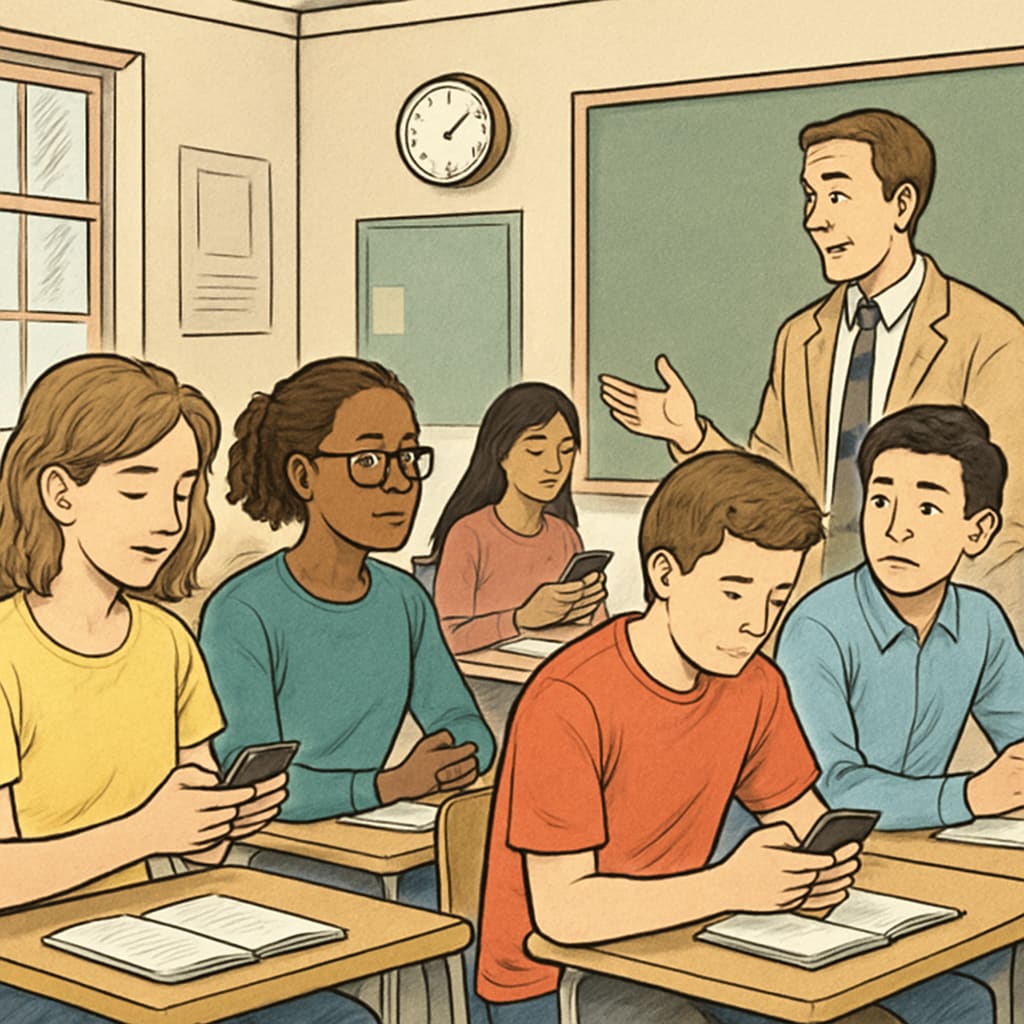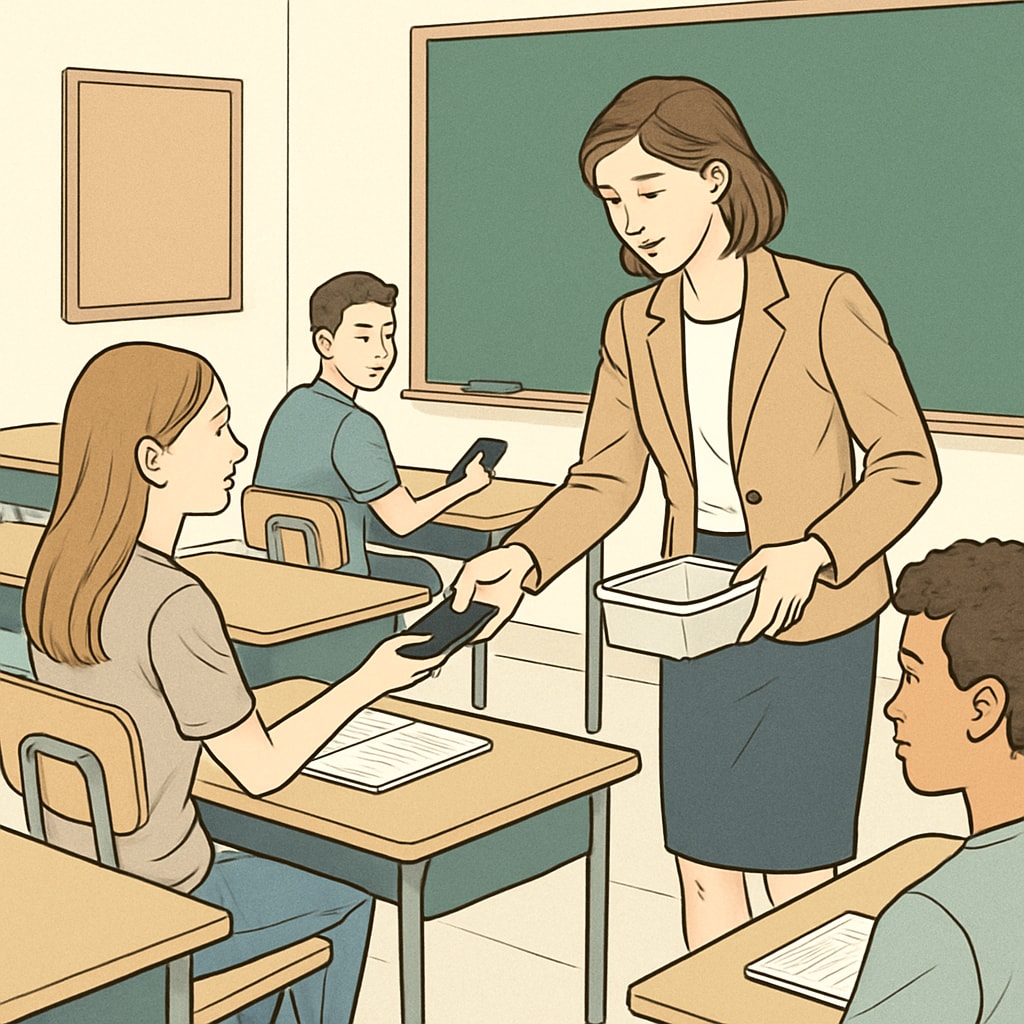The implementation of the campus phone ban in public and private schools has become a hot topic of discussion across the education sector. Advocates argue that limiting cell phone use in schools protects students from distractions and fosters better learning environments. On the other hand, critics question whether such restrictions may impede students’ social development and their ability to adapt to a technology-driven world. This debate raises an important question: Is the ban a necessary step for better education, or does it overly restrict students’ freedoms?

The Rationale Behind the Campus Phone Ban
Proponents of the campus phone ban highlight several benefits. First, limiting phone use reduces distractions in the classroom, allowing students to focus on their studies. According to a 2018 study published in Britannica, multitasking with smartphones can significantly impair cognitive function, making it harder for students to retain information. Additionally, the ban aims to promote face-to-face communication, a skill often overlooked in the digital age.
Furthermore, increased phone usage has been linked to issues like cyberbullying and mental health challenges among teenagers. By reducing screen time during school hours, educators hope to create a safer and more supportive environment. For example, many public schools have reported fewer bullying incidents since restricting mobile phone use.
However, private schools often have more flexible approaches to technology use, with some integrating phones into their learning models. This raises the question of how to balance the benefits of technology with the need to minimize its potential harms.
Challenges of Implementation in Public and Private Schools
While public schools generally have stricter enforcement of the phone ban, private schools often adopt a more nuanced approach, reflecting their autonomy in policy-making. Public schools, which serve a wide range of students, aim to create uniform rules to ensure equality. However, enforcing the ban can be challenging, especially in large schools where monitoring every student is difficult.
Private schools, on the other hand, might allow phones for educational purposes while still restricting their use during non-instructional times. This flexibility can be advantageous, as it prepares students for the responsible use of technology. For example, a private school in California has implemented a “tech-free lunch” policy where students are encouraged to engage in conversation instead of screen time, while still permitting phone use during certain classes for research purposes.
Both approaches have their merits, but they also highlight the broader challenge: how can schools create policies that balance the benefits of technology with its risks?

Impact on Students’ Learning and Social Development
The effects of the campus phone ban on students’ learning and social development are multifaceted. On one hand, reducing phone use can lead to improved academic performance. A study by the London School of Economics found that banning phones in schools led to a 6.4% increase in test scores, particularly benefiting low-achieving students.
On the other hand, some argue that the ban may hinder students’ ability to develop digital literacy skills, which are critical in today’s job market. Private schools that incorporate technology into the curriculum often emphasize responsible usage, teaching students how to leverage digital tools effectively.
Socially, the ban may encourage students to engage more with their peers, fostering stronger interpersonal relationships. However, it could also create a sense of frustration among students who use phones as a means of self-expression or connection with family during emergencies.
Striking the Right Balance
Ultimately, the success of the campus phone ban depends on how it is implemented. Schools must consider the unique needs of their student populations while setting clear and reasonable guidelines. For instance, allowing limited phone use during breaks or for specific educational purposes could provide a balanced approach.
Parents and educators also play a crucial role in reinforcing the importance of responsible phone usage. Open communication between schools and families is essential to address concerns and ensure that policies are both effective and fair.
In conclusion, while the campus phone ban offers numerous benefits, it also presents challenges that require careful consideration. By fostering collaboration among educators, parents, and students, schools can create environments that support both academic success and personal growth in the digital age.
Readability guidance: Each section addresses a specific aspect of the topic, with concise paragraphs and clear transitions. Lists and examples are used to enhance readability, and technical terms are explained where necessary.


